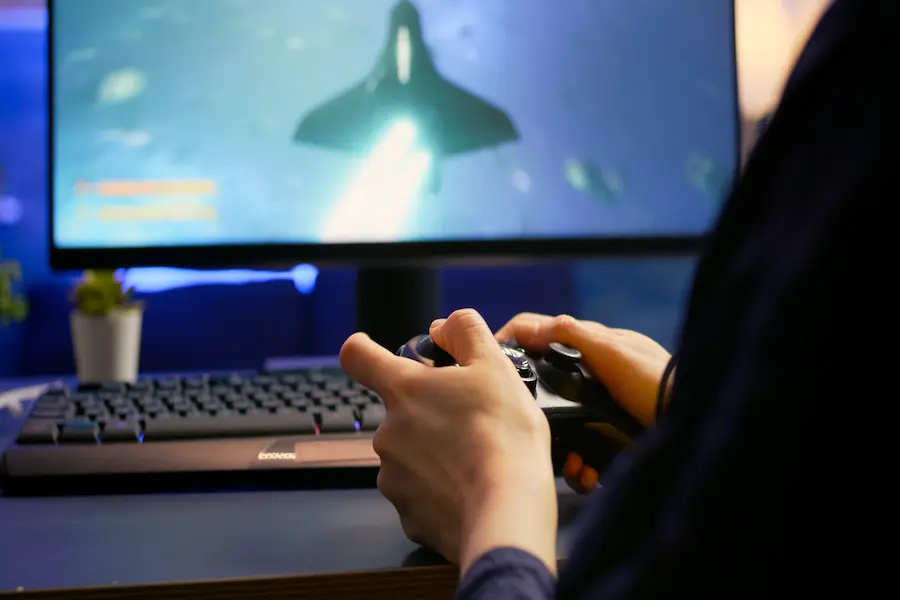The Ultimate Guide to HSSGameStick Manual Settings: Full Customization for Gamers
The HSSGameStick is a compact, plug-and-play gaming console that appeals to casual players and retro gaming enthusiasts. With a library of games from various console eras, it provides hours of nostalgic fun. However, while the default settings may satisfy many users, there’s much more to explore. From video settings to controller customization, manual settings allow you to tweak your gaming experience for superior performance and enjoyment.
This guide will help you unlock the full potential of your HSSGameStick by walking you through essential settings. Whether you’re a casual gamer or a retro enthusiast, these adjustments will ensure your device performs at its best.
Getting Started with HSSGameStick Manual Settings
Before diving into the customization options, let’s make sure your HSSGameStick is set up properly:
- Plug the Stick: Insert the HSSGameStick into your TV’s HDMI port.
- Connect the Power: Use the included USB cable to power the stick.
- Use the Controller: Turn on your device with the provided gamepad or remote.
- Access the Menu: Once the interface loads, navigate to the settings panel for further customization.
The HSSGameStick’s interface typically resembles EmuELEC or a similar emulator frontend, depending on your model.
1. Video and Display Settings
Screen Resolution
Adjusting your screen resolution can significantly improve the visuals of your game. The available options include:
- 720p: Ideal for older TVs or when prioritizing speed.
- 1080p: The best option for most modern games, balancing both quality and performance.
- Auto: Lets the system automatically adjust based on your TV’s specs.
Aspect Ratio
Retro games were designed in a 4:3 ratio, but most modern TVs are widescreen (16:9). Choose:
- 4:3 for a nostalgic, original experience.
- 16:9 to stretch the image and use the full screen.
Frame Buffer and Lag Reduction
Some models allow you to enable or disable frame buffering. Disabling it can reduce input lag, but it might cause screen tearing. Test both to find what works best for you.
2. Audio Settings
Output Device
Choose your audio output device:
- HDMI: Default option, sends audio to your TV.
- Bluetooth: Ideal for using wireless headphones or speakers.
- SPDIF: For high-end sound systems, if supported.
Volume Mixer
Customize the audio levels for:
- System sounds
- Game music
- Game sound effects
- Menu feedback This lets you find the perfect audio balance for immersive gaming.
Mute Option
For moments of quiet, you can instantly mute all sounds with the global mute option.
3. Controller Settings
Button Remapping
Customize your controller’s button layout to match your playstyle. For example, swap the “A” button with “X” for a PlayStation-like experience or assign quick save/load functions to other buttons.
Turbo Mode
Activate turbo mode for rapid button presses. This feature is helpful for games where speed is critical, such as arcade or fighter games.
Input Configuration
Recalibrate third-party controllers by manually assigning functions to buttons and directions.
4. Game-Specific Settings
Customize your settings for each individual game:
- Save States: Save your progress at any point during the game, rather than just at designated save spots.
- Cheat Codes: Add cheat files (like .cht files) to enable cheats in older games.
- Shaders and Filters: Apply CRT-style shaders for that authentic retro look.
- Run Commands: Set specific emulator configurations for each game.
5. Emulator Settings
HSSGameStick supports multiple emulators. For each emulator, you can tweak settings to get the best performance.
Core Selection
Choose the emulator core best suited for the game:
- NES: Nestopia or FCEUX
- SNES: Snes9x or bsnes
- PlayStation: PCSX-ReARMed or Beetle PSX
Graphics Configuration
Improve visual quality and performance by adjusting settings like:
- Integer scaling: Ensures pixel-perfect rendering.
- Bilinear filtering: Smoothens pixel edges.
- V-Sync: Eliminates screen tearing.
- Frame skipping: Adjusts the frame rate for smoother visuals.
6. Network & Connectivity Settings
Wi-Fi Setup
For online updates or file transfers, connect to Wi-Fi:
- Go to Network Settings > Wi-Fi
- Select your network and enter your password.
FTP Server
Enable FTP to wirelessly transfer ROMs from your PC to the HSSGameStick:
- Default port: 21
- Username/Password: “root/root” or “pi/pi,” depending on your firmware.
7. Storage Management
Internal vs. External Storage
Expand your storage by adding an SD card or USB drive. Ensure the card is formatted in FAT32 or exFAT and store games in the /roms/ folder.
Backup Save Files
Regularly back up your save files to prevent data loss. Use an external device or cloud storage for peace of mind.
8. System Customization
Themes and UI
Change the appearance of your system’s interface. Download custom themes, adjust fonts, and customize background images and icons.
Language Settings
Switch to your preferred language if available in your system settings.
Auto Boot
Set your favorite game or menu to launch automatically upon startup.
9. Updating Firmware
Firmware updates can fix bugs and introduce new features. Make sure to:
- Check for updates via Wi-Fi.
- Install updates manually using a USB stick if needed.
- Backup data before updating to avoid data loss or bricking your device.
10. Troubleshooting Common Issues
Games Not Loading
- Ensure ROM files are compatible.
- Try a different emulator core.
- Reformat the SD or USB drive if needed.
Controller Not Responding
- Reconfigure the controller inputs.
- Test with a different USB port or controller.
Black Screen
- Lower the resolution if the display isn’t showing.
- Test with another HDMI port or TV.
- Reflash the firmware if necessary.
Conclusion
The HSSGameStick is a powerful tool for retro gaming, offering a customizable and immersive experience. By adjusting video, audio, controller, and network settings, you can significantly enhance your gaming setup. Experiment with these manual settings to tailor your experience, and don’t forget to regularly back up your data.
Whether you’re exploring classic arcade titles or 32-bit era favorites, these tweaks ensure smooth performance, excellent visuals, and optimal gameplay. Your HSSGameStick is ready to provide the ultimate retro gaming experience, now customized just the way you like it.
Frequently Asked Questions (FAQs)
1. How can I improve the performance of my HSSGameStick?
- Adjust the video settings to match your TV’s resolution. You can also disable frame buffering to reduce input lag, especially in fast-paced games.
2. How do I connect my HSSGameStick to Wi-Fi?
- Go to Network Settings > Wi-Fi, select your network, and enter your password.
3. Can I add more games to the HSSGameStick?
- Yes, you can expand the storage by adding an SD card or USB drive. Just ensure the games are stored in the /roms/ folder.
4. How do I update the firmware on my HSSGameStick?
- Go to the settings and check for available updates via Wi-Fi or manually update using a USB stick.
5. Why is my controller not responding?
- Try recalibrating the controller or using a different USB port. Make sure it’s properly connected.
Read Also:5 Revolutionary NVIDIA AI and GPU Innovations Transforming Gaming & Healthcare

